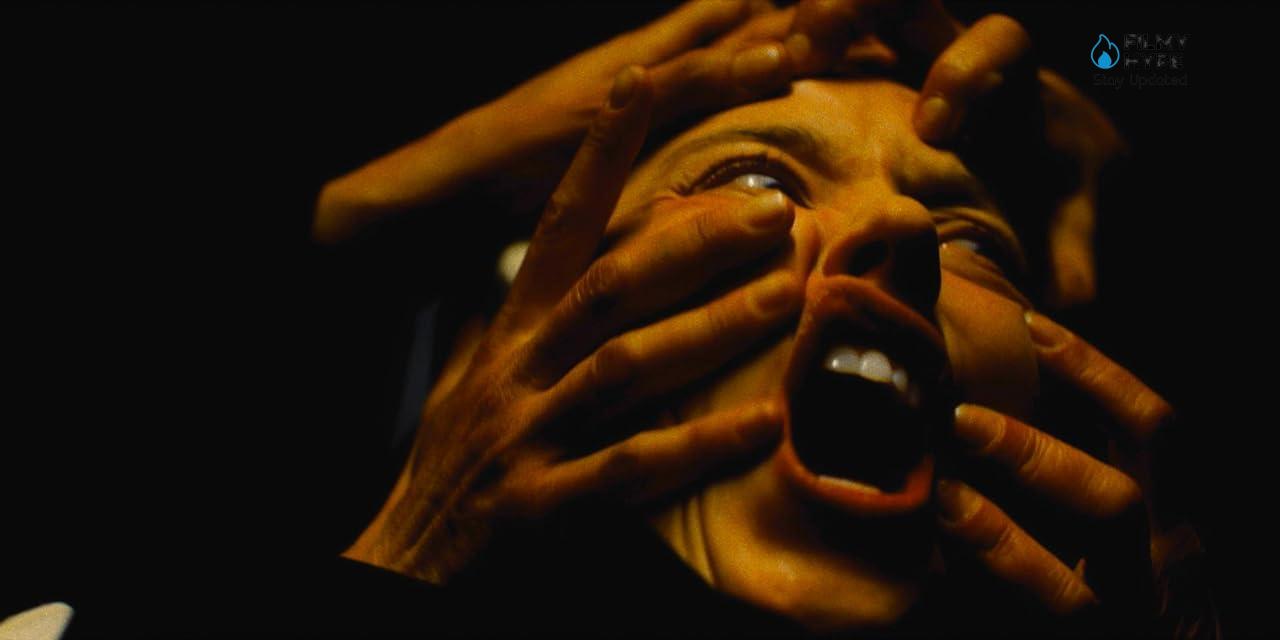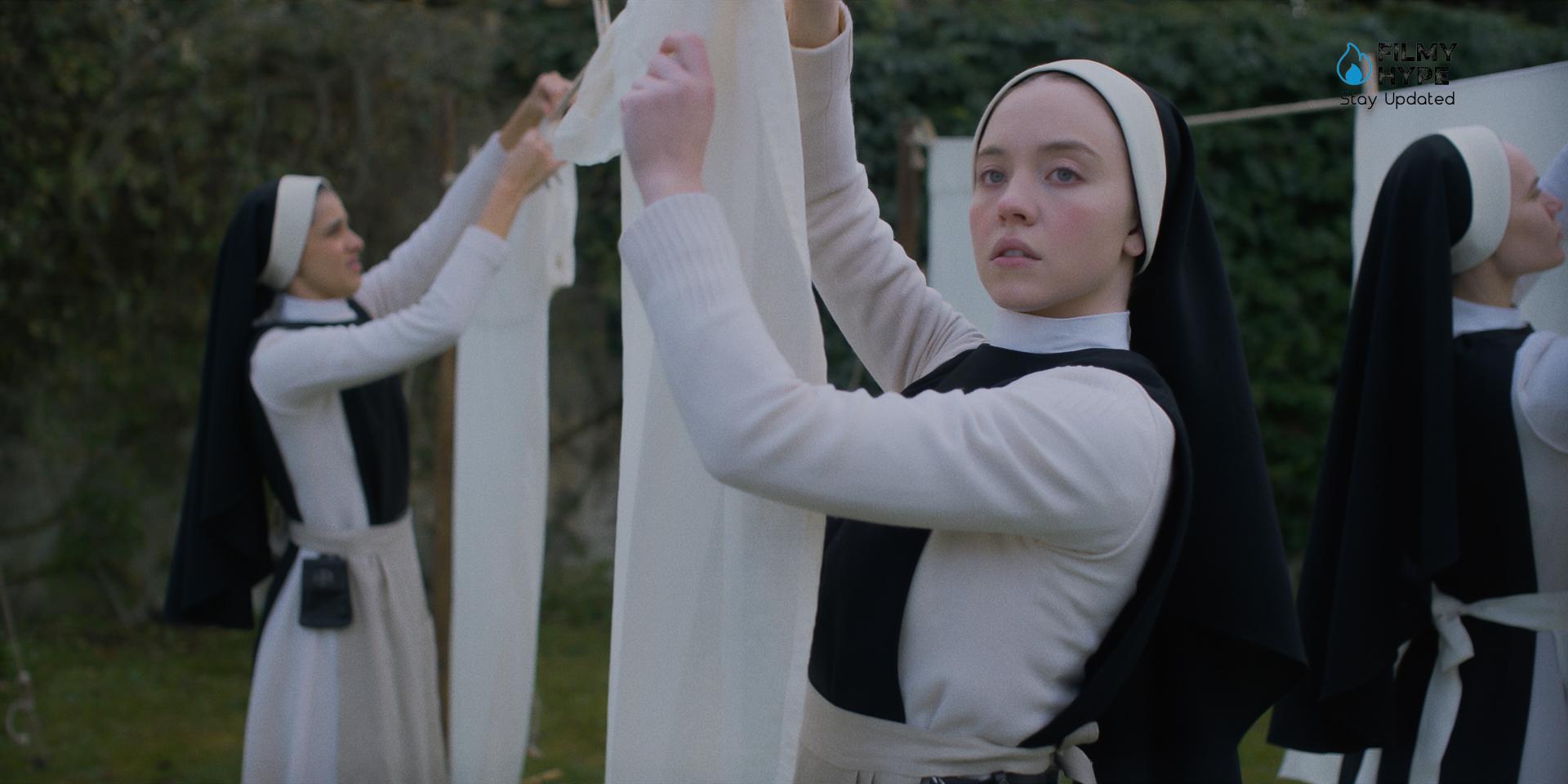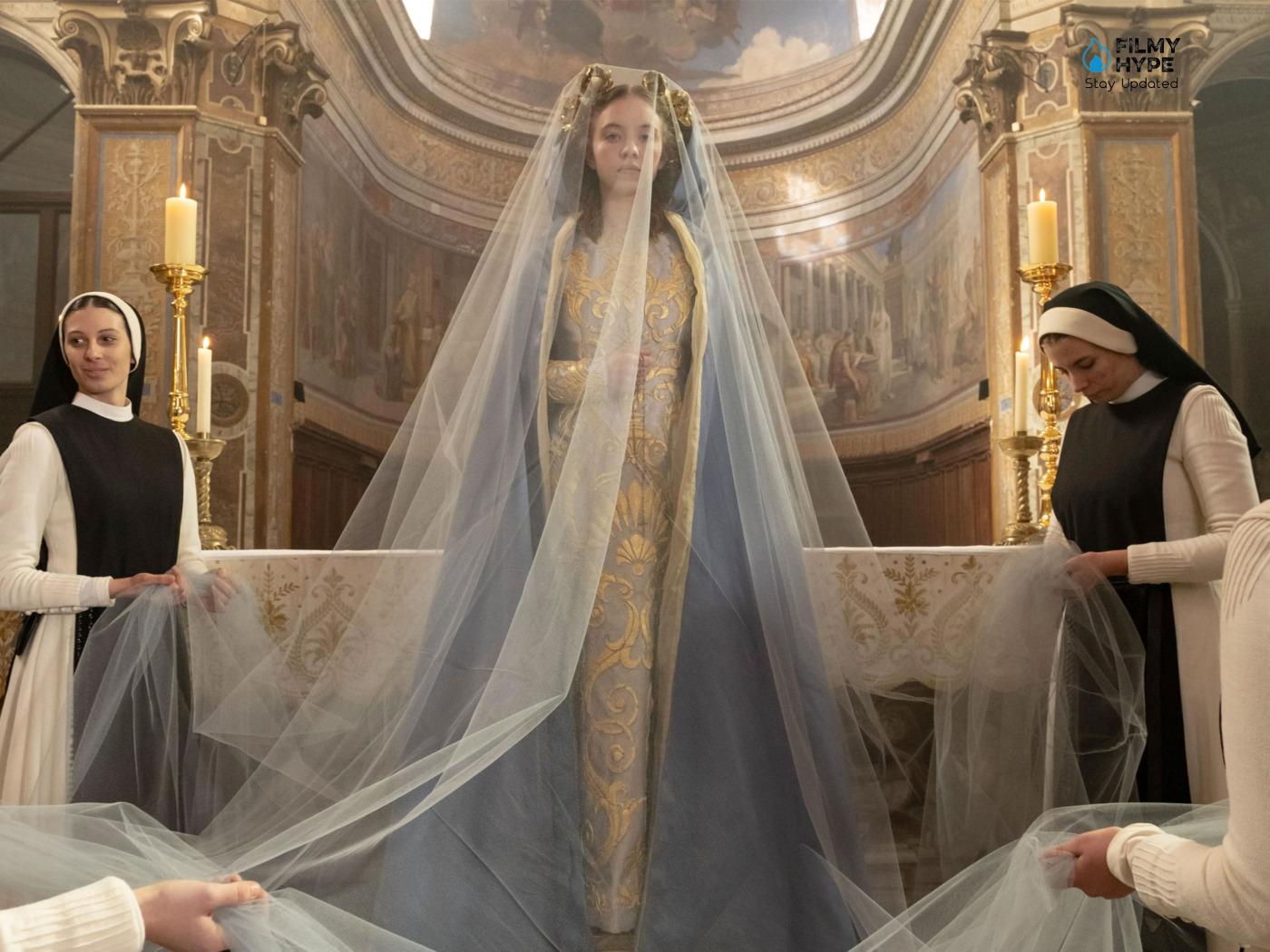Immaculate Ending Explained: Cecilia’s Final Escape Attempt Was Successful or Not?
Sydney Sweeney pushed the envelope in Immaculate, the new horror film directed by Michael Mohan. The film revisits the myth of the Virgin Mary, with a dark twist. The R rating of Immaculate already anticipates the extreme tone of the film, ready to attract the audience by re-proposing the classic fight between good and evil with religious horror. Sydney Sweeney is Sister Cecilia, a young nun who becomes inexplicably pregnant (the girl is a virgin): hers is a miracle, but as soon as the pregnancy is announced, disturbing things begin to happen around her. How does Immaculate end, then? Perhaps it is one of the horror films that, willingly or not, is making the most talk about itself during 2024, and rightly so. Starring a brilliant and extraordinary Sydney Sweeney (here also a producer of the project), Immaculate has hit Italian cinemas starting last Thursday, July 11, distributed by Adler Entertainment and Leone Film Group, after debuting in the USA in March, receiving simply polarizing reviews.

The film directed by Michael Mohan and written by Andrew Lobel is an excellent example of a film that plays intelligently and with a healthy dose of trash with the subgenre of exploitation, that is, the cinematographic phenomenon that since the 70s had brought into the production of horror and thriller film and television projects all the ineffable charm of the ecclesiastical members of the Catholic Church, including nuns, priests, hidden conspiracies and terrifying secrets between faith and profanity. In our explanation of the ending of Immaculate we will try to establish once and for all what is the hidden and metaphorical meaning of those shocking last five minutes, in which Sydney Sweeney definitively imposes herself as a first-rate contemporary scream queen.
What is Immaculate About?
The horror film directed by Michael Mohan tells the story of Cecilia (Sydney Sweeney), a novice who has decided to dedicate her life to Jesus since childhood: years before, she was declared dead for seven minutes after drowning in a frozen lake and then came back to life, which convinced her that God saved her for a reason. At the invitation of Father Sal Tedeschi (Alvaro Morte), she takes her vows in a Roman convent specialized in providing care to dying nuns. Ordinary administration, in short, if it were not for the fact that at a certain point Cecilia, who has never had sexual contact with a man, discovers that she is pregnant, a phenomenon welcomed by the Church as a miracle. But as the months pass, the girl begins to suspect that the convent hides something sinister, and that behind her pregnancy lies a plan that is anything but benevolent.
Cecilia is absolutely right in believing that there is something shady behind the convent: in fact, as we have already explained in our review of Immaculate, the character played by Sydney Sweeney discovers that the convent chapel houses a relic of the Holy Nail that crucified Jesus Christ and that in reality Cecilia was voluntarily chosen by Father Tedeschi (in collusion with the monsignor and the Mother Superior of the convent) as the bearer of the new “Messiah”, whose DNA has been sought and tested for years with poor results by the priest played by Alvaro Morte from the tip of the relic of the Holy Nail. The young nun thus finds herself carrying in her womb without sin the possible miracle of the second coming of Jesus Christ on Earth, a miracle aborted (literally) over and over again on the skin and (female) body of many young devotees and novices before the unfortunate Cecilia. But she will sell her skin dearly to unmask the conspiracy and “free herself” from the creature that is growing exponentially in her womb.
Immaculate Ending Explained: Cecilia’s Final Escape Attempt Was Successful or Not?
Towards the end of the film, Cecilia attempts to escape from the convent by faking a miscarriage with the blood of a dead chicken. However, she is discovered and forced by Tedeschi and Enzo to return to the premises of the religious center. There, Father Sal Tedeschi reveals to him that he was a geneticist before becoming a priest, and thus can take DNA samples from the “Holy Nail” of Christ to impregnate nuns – against their will – and bring a new Messiah into the world. Until Cecilia, all of the man’s attempts had failed, as the fetuses had grown with malformations. However, he believed that the miracle had happened with the young woman.
Thus, in addition to giving her his explanation, Tedeschi marks a cross on our protagonist’s foot, implying that she is also one of the test objects of his macabre experiments related to genetic modification. After this, Cecilia cannot rest easy and makes another attempt to escape. In this way, she manages to beat Mother Superior to death, without imagining that her water would soon break. Eventually, the girl manages to strangle the Cardinal and, with the strength she has left, decides to douse Tedeschi’s entire laboratory with ethanol. He, of course, tries to stop her, but Cecilia escapes… by setting the room on fire.

Let’s get to the details of what happens in the last, tense minutes of the horror film produced by the same leading actress. In an attempt to escape from the clutches of the conspirators inside the convent, Cecilia fakes a miscarriage using a dead chicken, but the deception is discovered and she is forcibly brought back by Tedeschi and his collaborator. Tedeschi carves a cross on Cecilia’s foot, a symbol present on many other nuns who had previously been used as “guinea pigs” for the terrible genetic experiments of the Italian priest, but our protagonist tries to escape again, and in doing so she fatally stabs the Mother Superior (Dora Romano) using a crucifix.
When her waters break shortly thereafter, she also manages to strangle the Cardinal (Giorgio Colangeli) with her rosary before dousing Tedeschi’s laboratory with ethanol; he arrives and tries to stop her with physical force, but Cecilia escapes by setting the room on fire. However, he manages to escape from the laboratory after putting out the flames and continues to chase Cecilia, who flees into the catacombs beneath the convent and finds the mutilated corpse of Sister Gwen played in the film by Benedetta Porcaroli, and a hole in the walls of the catacombs. Tedeschi finds her just as she is about to escape and in the struggle that follows, he tries to cut open her stomach, but she stabs him in the throat with the relic of the Holy Nail, which she had previously stolen from the chapel. After emerging from the catacombs, Cecilia gives birth in agony and bites the umbilical cord herself. Horrified by the sight of the “child,” who can be heard making animalistic noises, Cecilia picks up a nearby rock and kills the child. End of the film, but what does it all mean?
My Body, My Choice?
As we explained in a recent article on the differences and similarities between Immaculate and the film Omen, the feature film directed by Michael Mohan is in all respects an intelligent and extremely pop invective against the millenary and patriarchal system of the Catholic Church, an institution that for centuries and centuries has influenced a whole mindset of Western society of yesterday and today that still in its relevance prohibits the female figure from taking priestly vows and calling mass. A professional and institutional relegation that fences off the possibilities of women within Catholic dogma in the guise of the nun, hierarchically inferior to the ranks and liturgical possibilities of the male priest.

For this reason, the horror satire starring Sydney Sweeney, and the accompanying ending of Immaculate, wants to tell nothing other than an awareness (that of the young Sister Cecilia, but also the entire female audience) of how even the woman’s body itself does not seem to belong to its legitimate owners, here forced to a modest and modest life, cyclical victims, of a terrifying comic book experiment that would have them as ideal bearers in the womb of a new and vaunted Messiah who would have revived and strengthened the values of the Catholic faith in a contemporary age in which the power and influence of the Holy Roman Church are increasingly diminishing. Sister Cecilia’s final refusal in front of that hypothetical abomination that came out of her womb (and the shocking final action of putting an end to the life of that fetus with a huge boulder) therefore means that the body of the female protagonist, even if devoted to the Catholic faith and devotion to God, is hers and hers alone. As well as the decision to make and use it as he pleases.
What Does the End of Immaculate Mean?
However, as a weed never dies, Tedeschi continues his pursuit, forcing the young novice to flee through the catacombs beneath the convent. There, Cecilia finds Gwen’s mutilated corpse and, just as she tries to escape through a hole, her captor finds her and begins to fight her. In this way, the subject tries to open her stomach to keep the fetus. However, he did not expect that she had previously stolen the “Holy Nail” and, in a move for her survival, the young woman stabs him in the throat. Thus, with a bit of poetic justice, Tedeschi meets his death through the instrument with which he abused so many women. Cecilia finally manages to get out of the catacombs and finds herself in a meadow, where she gives birth in immense pain, biting the umbilical cord herself. Upon seeing the “baby,” the girl is utterly terrified, even more so when she hears it making animal noises… implying that she brought the Antichrist into the world. After this, Cecilia grabs a rock and, with the fury she had pent up, crushes the creature until it dies. Her nightmare was over!

